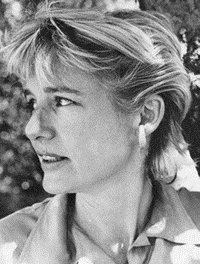Did the KGB Murder President Kennedy’s Girlfriend?
On October 12, 1964, Mary Pinchot Meyer was murdered on the canal towpath in Georgetown1. A divorced artist from a prominent family, Meyer was known by insiders to have been President John F. Kennedy’s senior female consort during his White House years, though the story never leaked to the public.
Her murder and the ensuing trial of Raymond Crump, Jr., an African-American laborer found by the police in the vicinity of the murder, drew a good deal of attention at the time. Crump had been identified by a gas station attendant helping start a car on a road overlooking the canal. Hearing cries of “Somebody help me. Somebody help me” and two shots, the attendant ran to look. He subsequently claimed to have seen a man dressed like Crump standing over the body a few seconds after the shots, and he said that the man put something dark into his pocket.
An Air Force lieutenant who had been jogging on the towpath reported that he had passed a woman resembling Meyer walking westward as he headed back eastward, and then a man roughly resembling Crump 200 yards behind her.
Crump was encountered by a policeman not far from the crime scene after police, alerted by the gas station attendant, had blocked the exits to the wooded area between the canal and the Potomac River. Crump was wet and jacketless on a chilly day, and his fly was open. He told the police that he had fallen asleep and his fishing rod had slipped into the water (it was later found at home). A jacket that fit Crump and that his wife said was his was found in the vicinity. A meticulous hunt including frogmen found no weapon. Crump was arrested on the basis of the evidence available.
The gunshot wounds that killed Meyer were in the back of the head and in the heart. Both wounds showed signs of being inflicted by shots fired very close to the skin.
In spite of suggestive circumstantial evidence against Crump, a D.C. jury found him not guilty. The prosecution had missed bringing some key evidence to the attention of the jury. Another exonerating factor was the presentation of Crump by his lawyer as a poor, confused, harmless little man who was being blamed for a crime he hadn’t committed. The real murderer had escaped before the police closed off the exits from the area. The lawyer later told a journalist that Crump had been very uncommunicative and that he had cried when she visited him in prison. Three members of his mother’s church testified that he was an upstanding young man.
Crump subsequently led a life full of crime, with 22 arrests in the Washington, D.C. area, including cases of assault with a deadly weapon, arson, and rape. It is quite possible that he committed other crimes of which he was not suspected.
Mary Pinchot Meyer had previously been married to senior CIA official Cord Meyer. The day following the murder, CIA counterspy chief James Angleton was found inside her Georgetown house hunting for her diary, thought to have included sensitive information about Kennedy. When the diary was finally found some time later, it was given to Angleton. It was subsequently said to have been destroyed by CIA.
Various researchers and observers have examined the case. Their opinions are divided. Some have tried to tie Meyer’s murder to the assassination of Kennedy the previous year, and a few even suggest that the CIA was involved in both. However, there is another explanation.
A Theory of the Case
When this writer was serving in the Department of State in the 1980s, a CIA officer told him that the KGB had murdered Kennedy’s girlfriend. The KGB made the murder look like a sexual attack that went awry.
We now know that CIA found out within an hour or two, perhaps from SIGINT or perhaps from HUMINT, that in fact it was a KGB job.
CIA was evidently reluctant to reveal what it knew, so the case has gone officially unsolved for decades. Now this writer has taken a closer look at the case and considers that the American people’s right to know their own history overrides any lingering concerns about revealing sources and methods, both very old by now.
The simplest, most telling explanation https://www.scientiapress.com/mary-meyer-cuban-missile-crisis would be that, in her desire to promote peace, Meyer had inadvertently misled Khrushchev into thinking that Kennedy was too weak and peace-loving to respond to Soviet missiles in Cuba. When this proved wrong and Khrushchev was humiliated, he decided to eliminate her. Indeed, a new interpretation of references by Khrushchev to that “viper” and that “millionaire’s whore” as referring to Meyer suggests as much. A KGB cut-out hired Crump to murder Meyer in a way that looked like a sexual assault that went awry. Crump was instructed to act dumb and even like a plausible sexual attacker, yet could remain confident that no D.C. jury would find him guilty as long as he safely disposed of the murder gun. Crump would presumably never know that it was the KGB that was paying for his work as a contract killer.
Meyer had been a close confidante of Kennedy during his presidency, serving as a back-channel intermediary with the KGB and Khrushchev. The arguments for reevaluating from the perspective of the KGB role in the Meyer murder its apparent role in the assassination of John F. Kennedy are spelled out at Did the KGB Arrange the Assassination of John F. Kennedy?.
The theory that the KGB hired Crump to murder Meyer makes sense of the available evidence regarding the case. Crump was a violent, ruthless man. His lingering in the vicinity of the crime strongly suggests that he wanted to be arrested. His weeping and other behavior were nothing more than acting. He was a contract killer who seems to have unwittingly done the bidding of the KGB.
See also:
Did Mary Meyer Unintentionally Set Off the Cuban Missile Crisis?
The KGB Theory of American Assassinations
*****
Kenneth J. Dillon is an historian and former State Department intelligence analyst who writes on science, medicine, and history. See the biosketch at About Us. See also his novel Rosemarie (Washington, D.C.: Scientia Press, 2021).


